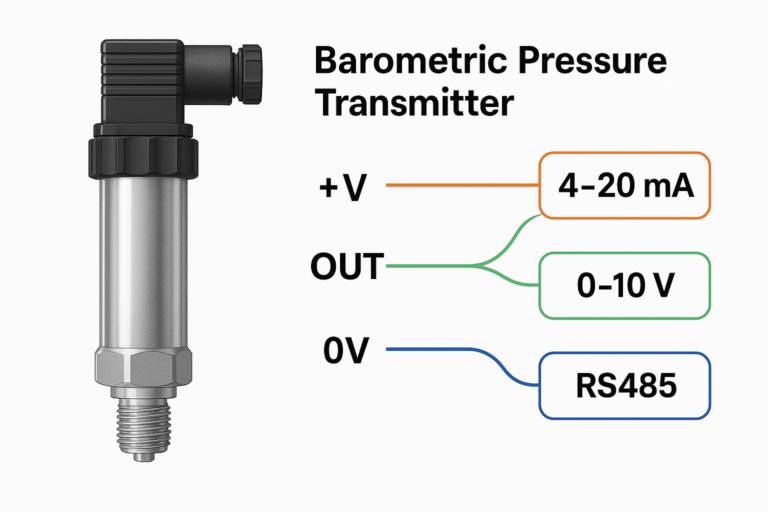A Barometric Pressure Transmitter is an instrument designed to measure atmospheric pressure and convert it into a standardized electrical signal for monitoring or control purposes. As a key member of the pressure transmitter family, it holds significant importance in various industrial, scientific, and environmental applications due to its accuracy, reliability, and versatility.
1. Laboratory Standard Reference
In many scientific experiments, maintaining a consistent atmospheric pressure is essential. Barometric pressure transmitters provide accurate real-time data that serve as a reference standard, ensuring experimental reliability and reproducibility.
2. Enhanced GPS Positioning
Barometric pressure data significantly improve the accuracy of GPS-based positioning systems. While standard GPS provides horizontal coordinates, integrating a pressure sensor enables the calculation of altitude and even floor-level detection in buildings. This is particularly beneficial in applications such as drones, fitness wearables, and indoor navigation systems.

3. Applications in Agricultural Meteorology
Atmospheric pressure plays a crucial role in weather patterns. High pressure often leads to dry conditions, which may result in drought, while low pressure tends to bring clouds and rainfall, which can cause flooding if excessive. By monitoring pressure changes through barometric transmitters, agricultural meteorological stations can issue early warnings and enable preventive measures to minimize crop damage.
4. Product Features
Barometric pressure transmitters are designed with practicality and performance in mind:
Flexible installation for various environments
Easy to operate and calibrate, with user-friendly interfaces
Signal isolation and anti-interference design for improved stability
Built-in protections including reverse wiring, overvoltage, and current limiting
Wide voltage input support (e.g., 9–36V DC)
Multiple output options, such as 4–20mA, 0–10V, RS485 (Modbus), etc.
Thanks to their reliable construction and robust performance, these transmitters provide consistent, accurate measurements, ensuring dependable operation in both indoor and outdoor environments.
